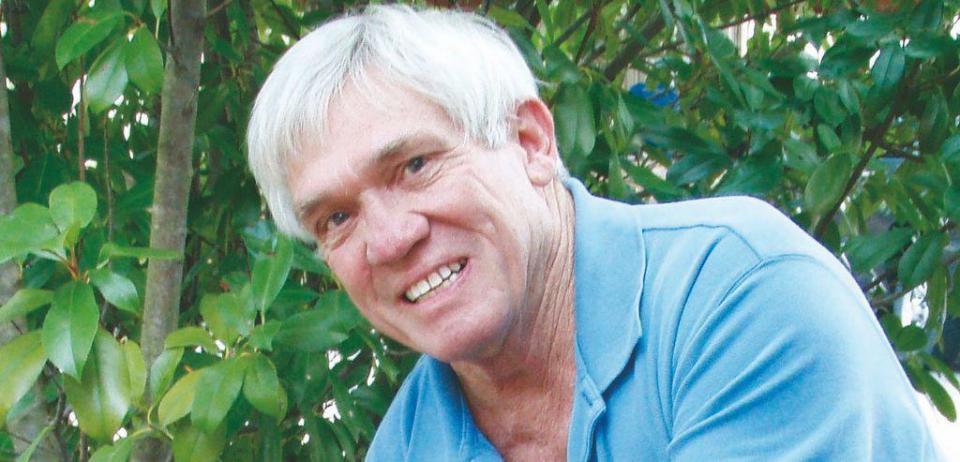Life in the dark can be intriguing | ECOVIEWS
- Oops!Something went wrong.Please try again later.
If Edgar Allan Poe had been an ecologist, he might have enjoyed writing a story titled “Life in the Dark: Illuminating Biodiversity in the Shadowy Haunts of Planet Earth.”
The real book by that name, written by Danté Fenolio and published by Johns Hopkins University Press, is one of the most interesting presentations I have seen of obscure life that few of us know about and even fewer ever see. Fenolio introduces us to macabre creatures with names like viperfish and fangtooths that would surely have delighted Poe.
Opening the book, one is struck first by the absolutely awesome photography, which leads to two immediate questions: How do these weird animals make a living and how was anyone able to photograph them? The answer to the second is a combination of persistence and dedication to art and to science in exploring and photographing around the world, plus taking advantage of modern technology.
For many of the deep-sea creatures, Fenolio was actually onboard trawling ships in the Gulf of Mexico and various oceans for weeks at a time. When the net brought animals to the surface, he was there day and night with his photographic equipment.
One series of photos records the development stages from embryo to adult of a deep-sea angler fish called Murray’s abyssal sea devil. The name is apt considering the fish was named after Sir John Murray, the father of modern oceanography, lives at ocean depths below 6,000 feet and has the nightmarish look of a monster one might expect to see at such depths if it were not pitch black. One photo is of an open-mouthed sea devil with plenty of teeth as it chases an orange, fluorescent, and presumably terrified, shrimp.
But all is not horror and dread in the dark, and the abysses of the ocean are not the only places the author has explored. Shallower seas, underwater caves and beneath the soil are also areas of darkness in which animals must adapt or disappear.
One photo shows a colleague wading waist-deep in water, with the roof of a cave just above his head. Some of the photographs are stunning without being scary, such as several pages of glow-in-the-dark small fishes, including blue-striped dottybacks, purple firefish and giant flashlight fish that live in tropical seas at moderate depths.
The photography is captivating, and the author’s ecological explanations of how bioluminescent organisms work are equally intriguing. Not surprisingly, much of the biology of this underwater world remains unknown to science. The book makes readers wish we knew more.
Although we are all aware that many strange fish live far beneath the sea, Fenolio also discusses fascinating invertebrates on ocean floors. The photo of him holding a Japanese spider crab, the largest crab in the world with a span of up to 12 feet between outstretched claws, is impressive. But even more so in one sense is a picture of the giant isopod, the world’s largest sowbug, which reaches a length of more than 30 inches. Imagine if the isopods in our backyards, the roly-polys, reached that size!
Fenolio’s photography will capture anyone’s attention. The writing is also excellent, with a conservation thread that runs throughout the book. People cannot care for something if they do not even know it exists, and with this book everyone will know of many more life-forms than they did before.
At the end Fenolio says, “My closing message is a request, plea really, that we not only marvel at life’s wonder, but also do our part to preserve it . . . for generations to come.” One can easily envision the dramatic photographs and biological discussions of some of this hidden biodiversity appealing to Poe’s ghoulish imagination. But most of the book is an overview of benign beings that add to the world’s amazing biodiversity, which we can only truly appreciate by knowing they are there and seeing images of them.

Whit Gibbons is professor of zoology and senior biologist at the University of Georgia’s Savannah River Ecology Laboratory. If you have an environmental question or comment, email ecoviews@gmail.com.
This article originally appeared on The Tuscaloosa News: Life in the dark can be intriguing | ECOVIEWS

